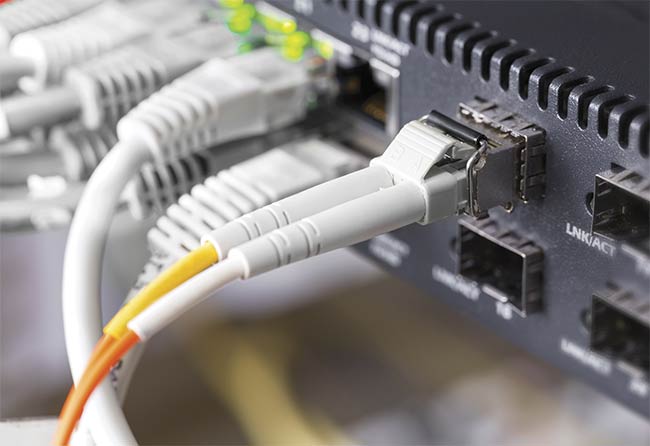Greg Annunziata, Consulting Systems Engineering Director, ProLabs
The new decade has brought with it the growing anticipation of a complete transformation of data center networks. This trend is expected to evolve networks and revolutionize the potential for new customer experiences. However, many data center operators overseeing upgrades are not expecting to adopt 400G (Gb/s) until sometime in the future, when the technology has further matured. Oftentimes, operators are focused on transitioning their current infrastructures from
10G to 100G or — in some cases —
to 25G. However, both are outdated systems, relative to the technology now available.
So near, yet so far
In the past, upgrading to 100G simply meant replacing 10G optical links with either 40G or 100G links. Recently, 40G has declined rapidly because it was found to be too expensive and inflexible. It requires two separate switch ports to run each server and provides less output in the process. Because it can’t meet the adaptability required to effectively optimize network capacity, 40G has been rendered outdated and redundant in one sudden shift.

Close-up of a high-speed cable. Courtesy of ProLabs.
Its 25G counterpart, however, offers buildable connections on a single switch port. For example, 25G links can be multiplied by 4 to achieve 100G. As networks stabilize and platforms settle, these types of options are vital to the industry, which is why the transition toward 100G and 400G has proved so desirable.
The development of 100G began about 15 years ago, and today it is categorized as a mature technology. Following its development, 100G technology has
developed into a widely deployed, low-cost, low-power-consumption technology. Simultaneously, 400G has been laying new foundations. But, due to its cost-prohibitive nature, most mainstream data centers will not be able to harness it for years.
Upgrading: the options
Network operators are likely to opt for one of two scenarios for updating data center infrastructure. In the first, upon assessing cost-effectiveness and the existing infrastructure, it may be decided that the current architecture is strong enough to support higher capacities. Therefore, the only change that will be made will be the addition of more connections without increasing rates. While this is a short-term fix and postpones the need for a necessary upgrade, it is a way to manage near-term finances effectively in preparation for a total network rehaul. In the second scenario, for more long-term benefits, many may either make the interim step to 25G/100G/200G, or hold briefly and then make a direct upgrade to 400G.
As society has come to expect greater potential from its devices and networks, consumer behavior has been sparked most commonly by the ever-increasing demand for more bandwidth. This includes the expectation of network coverage in any location, at any time, and for anything. The delivery of such capabilities requires flexible, high-speed connections with the capacity to stream seamlessly and withstand the traffic generated by the Internet of Things, 4K video streaming, and other highly demanded services.
Industry impact
In light of the reality that 400G is close but still around the corner for most data centers, sales of 25G and 100G transceivers are likely to surge in the wholesale market. Third-party vendors may rise in popularity as the most cost-effective option for mass purchase of the required components. This is due to two reasons.
First, the price per transceiver will
become significant for data centers scoping their upgrades. Although a single transceiver generally does not come at a great cost, the accumulative bill for replacing every transceiver in the system, as would be required, would become exponentially large. As the popularity
of such transceivers has increased over years of development and deployment,
the market has become more competitive and therefore affordable, making it clear why seemingly outdated upgrades are only just gaining widespread traction.
Second, not only the transceivers will require replacement. Budgets for 100G upgrades will also have to account for switch renewal because older switches, and even some newer ones, are often unable to support 25G/100G to its full capacity. To navigate this issue, rewiring would have to be deployed alongside these new switches to ensure that the infrastructure is totally stable.
Both are intriguing reasons for data center operators to opt for third-party suppliers when procuring upgrade components. By sourcing the parts from third parties, already-large budgets can be kept as minimal as possible, while maintaining an open and accessible market. This ultimately facilitates the cost-efficiency of the industry through vendor competition and sets a precedent for the low-cost trade of future technologies when they eventually come into the mainstream.